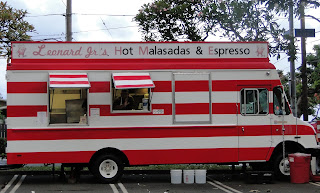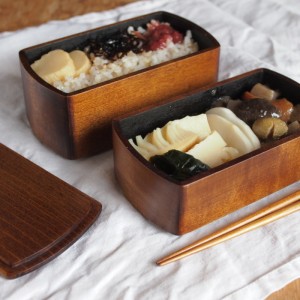What is Hawaiian Food?
The term "Hawaiian Food" can be confusing, or intriguing depending on how you look at it. We conducted an informal poll to see what type of food the public thinks of as Hawaiian. The largest comment was pineapple, second was Kabobs. Having a personal relationship with Hawaiian food I found this insight interesting because neither Kabobs nor pineapple are native to the Hawaiian Islands. It's worth mentioning coconuts are another food item not indigenous to the islands.
Kabobs, more accurately Shish Kabab, originate in the Middle East. Pineapples were originally from Paraguay and were brought to Hawaii in 1813 by Don Francisco de Paulka y Marin, a Spanish advisor to King Kamehameha. Not even the famous Hawaiian Pizza is from Hawaii. It was invented by a Canadian Pizza maker in Ontario, Canada.
I would classify Hawaiian cuisine into four categories, Commercial, Modern, Traditional and Historical. These are not official classifications, but make a good way to explain to others the fascinating evolution of Hawaiian food.
 Historical -
Somewhere around 500 AD the Polynesians found the Hawaiian Islands
while exploring the Pacific Ocean on large canoe like ships called
outriggers. These explorers brought minimal supplies, such as coconuts,
taro and pigs. Once they found the islands they used the ocean's
resources such as fish, shellfish and seaweed to survive. And survive
they did as the population expanded to all 7 of the largest islands
forming communities and tribes each with their own Ali'i (chiefs). During this time period foods such as Poi, Lau Lau, Kalua pig, raw fish and squid luau were prepared. Pigs were cooked in a Imu (buried pit) which is a method that combines smoking and roasting.
Historical -
Somewhere around 500 AD the Polynesians found the Hawaiian Islands
while exploring the Pacific Ocean on large canoe like ships called
outriggers. These explorers brought minimal supplies, such as coconuts,
taro and pigs. Once they found the islands they used the ocean's
resources such as fish, shellfish and seaweed to survive. And survive
they did as the population expanded to all 7 of the largest islands
forming communities and tribes each with their own Ali'i (chiefs). During this time period foods such as Poi, Lau Lau, Kalua pig, raw fish and squid luau were prepared. Pigs were cooked in a Imu (buried pit) which is a method that combines smoking and roasting.Traditional - In 1778 Captain Cook arrived bringing the first western influence. Merchants soon arrived wanting to trade, and missionaries came wishing to convert the Hawaiians to Christianity. This early wave of westerners brought live chickens, salt cured salmon and salt cured beef. It wasn't until 1792 when Capt. Vancouver gifted six cows and one bull to King Kamehameha. King Kamehameha placed a kapu on the heard so it would grow, and grow it did. Before you knew it cattle were out of control and the king recognized he needed help.
In 1823 King Kamehameha brought in Mexican
vaqueros from Spanish California. The vaqueros were there to help round up
the herd of cattle running feral on the Big island and to teach the
people of Hawai'i how to ranch. The
Paniolos (the name given to these cowboys) brought more than their ranching skills. They also brought
their cuisine. Ever since chili has been a staple on the islands
enjoyed year round over rice and often with a hotdog.
During this time period other dishes such as Roasted Chicken, Lomi Salmon (shown left), Beef Stew, Chili, Manapoua and Macaroni Salad became popular in Hawai'i.
Modern - in 1850 around 25,000 plantation workers from China came to Hawaii, followed by 200,000 from Japan between 1868 to 1924. Later workers immigrated from Korea, Okinawa, Philippines, Cuba, Portugal among other countries.
These immigrants lived in plantation communities that included their work, schools, clinics, stores and homes. Plantation life was meager and the families supported one another by sharing their traditions and food from their native countries.
The islands lacked spices from these foreign lands leaving immigrants to improvise with ingredients available to them. Many dishes in Hawaii morphed into a variation of the original dish from their homeland. A good example of this is Saimin, a noodle soup dish so popular in Hawaii it can be purchased at McDonald's. Saimin is a Chinese style egg noodle with a Japanese style dashi broth similar to Ramen. Those from China claim it's Japanese, and those from Japan claim it's Chinese. Both are wrong as this dish can only be found in Hawaii.
During this time period foods such as White rice, Kim Chee, Korean Kalbi ribs, Pork Katsu (Pork breaded in Panco and fried), Chicken Yakitori (Chicken grilled on a stick), Teriyaki beef, Lumpia (Filipino spring rolls), Portuguese Bean Soup, and even Shave ice were popularized.
It was also during this time frame when the plate lunch evolved from the plantation workers lunch gatherings. Read my take on plate lunches.
 Commercial -
During the 1930 & 40s Hawaii became a popular vacation destination.
In 1941 the attack on Pearl Harbor put Hawaii in the world wide
limelight. It wasn't until 1959 when the islands of Hawaii became the
50th state to join the United States of America. This along with air
travel opened the doors for American tourist and the creation of the
booming tourism industry in Hawaii.
Commercial -
During the 1930 & 40s Hawaii became a popular vacation destination.
In 1941 the attack on Pearl Harbor put Hawaii in the world wide
limelight. It wasn't until 1959 when the islands of Hawaii became the
50th state to join the United States of America. This along with air
travel opened the doors for American tourist and the creation of the
booming tourism industry in Hawaii.
The tourism boom brought about movies such as the 1961 Blue Hawaii by Elvis, the creation of the Hawaiian Pizza in 1962 (by a pizzeria in Canada) and popular mixed drinks served in hollowed out coconuts or pineapples. These practices fed the notion if you want to make something Hawaiian add pineapple to it.
 Commercial -
During the 1930 & 40s Hawaii became a popular vacation destination.
In 1941 the attack on Pearl Harbor put Hawaii in the world wide
limelight. It wasn't until 1959 when the islands of Hawaii became the
50th state to join the United States of America. This along with air
travel opened the doors for American tourist and the creation of the
booming tourism industry in Hawaii.
Commercial -
During the 1930 & 40s Hawaii became a popular vacation destination.
In 1941 the attack on Pearl Harbor put Hawaii in the world wide
limelight. It wasn't until 1959 when the islands of Hawaii became the
50th state to join the United States of America. This along with air
travel opened the doors for American tourist and the creation of the
booming tourism industry in Hawaii. The tourism boom brought about movies such as the 1961 Blue Hawaii by Elvis, the creation of the Hawaiian Pizza in 1962 (by a pizzeria in Canada) and popular mixed drinks served in hollowed out coconuts or pineapples. These practices fed the notion if you want to make something Hawaiian add pineapple to it.
At this same time the Modern Hawaiian palette continued to evolve and dishes such as SPAM, Malasadas, and Musubi were introduced. Other dishes popularized during this era was Guava chiffon cake, Chocolate haupia pie, and canned Corned beef.
Each of these eras have played a significant role in what defines today's Hawaiian cuisine. Depending on a persons heritage, and exposure, certainly plays a role in what they may see as Hawaiian. Any way you slice it, Hawaiian food is a compilation of world wide cultural blending of dishes described in Hawai'i as being Ono! An argument could be made that Hawaiian Cuisine is the original fusion food.
Each of these eras have played a significant role in what defines today's Hawaiian cuisine. Depending on a persons heritage, and exposure, certainly plays a role in what they may see as Hawaiian. Any way you slice it, Hawaiian food is a compilation of world wide cultural blending of dishes described in Hawai'i as being Ono! An argument could be made that Hawaiian Cuisine is the original fusion food.




Comments
Post a Comment